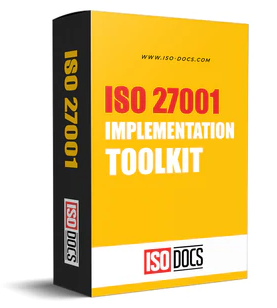Vulnerability and Examples of Vulnerabilities in ISO 27001?
Introduction
In the context of information security, one of the most critical terms that organizations need to understand is vulnerability. It's important also to clarify the difference between vulnerabilities and threats. While vulnerabilities provide a chance for threats to attack your systems and data, threats are the forces and elements that might make these attacks a reality. Finding these rather drastic weaknesses in time can annihilate markets, along with data privacy, relevance, and compliance.

What Is Vulnerability In ISO 27001?
Vulnerability in the field of information security occurs as potential threats if vulnerabilities are ever left for a successful attack. ISO 27001 sees it as part of an investigation process in the context of risk assessment so that vulnerabilities that are found will be analyzed for how likely and profound are the impacts of the potential incidents.
For Example:
- Poor password policies act as a vulnerability.
- A missed patch is considered a vulnerability.
- A server that failed to install necessary patches last year is considered a vulnerability.
- Unauthorized entry into the system is considered a vulnerability.
Why Understanding Vulnerabilities Matters
Not knowing a weakness (vulnerability) leaves any organization wide open for any attack. Going a step further to take care of a vulnerability is good because it does the following to an organization:
-
Strengthen the Security Posture: Any measures to identify and patch all potential vulnerabilities would naturally shrink the attack surface.
-
Decisively Prevent Data Breaches: To a varying extent, most breaches occurred because some known vulnerabilities have not been patched.
-
Go with ISO 27001 standards-compliant: It naturally requires continuing vulnerability tracking in a formal manner.
-
Enhance Reputation: Throughout its dealings with clients and donors, a corporation makes for itself affection if it is noted to be security conscious.
- Low downtime-have nothing secure: Less innumerable vulnerabilities mean less downtime because of occurrences.
Common Categories Of Vulnerabilities
Vulnerabilities show up in multiple areas of an organization, types commonly recognized of vulnerabilities for better application of ISO 27001 treatments:
a) Technical vulnerabilities
- Outdated software and operating systems
- Unpatched applications
b) Human vulnerabilities
- Weak or easily exploited passwords
- Falling for a phishing attack
c) Process vulnerabilities
- No incident response procedures
- Poor access control policies
d) Physical vulnerabilities
- Unsecured server rooms
- Inadequate CCTV monitoring
Real-World Examples Of Vulnerabilities
Here are some real-life examples of vulnerabilities that corporations are up against these days:
-
Weak Passcodes – Employees looped into one of the above two passwords. A highly likable passcode is the first whichever comes to an attacker.
-
Outdate Software – Outdated systems allow exploits from the likes of WannaCry ransomware.
-
SQL Injection – The security deceptive outcome of bad coding happens when companies leave vulnerabilities on websites open to database attack.
-
Victims of Phishing – Clicking on malicious links, exposing corporate data.
-
Unsecured Wireless Networks – Sensitive transmission leaves room for compromise on public wireless networks.
-
Lost Devices – Laptops without encryption are exposed to client information.
-
Shadow IT – For unsanctioned apps, staff members take the liberty of circumventing security protocols when otherwise.
- Default Configurations – A number of them, routers, databases, or applications, hacked because deeply ingrained in default settings.
How Does ISO 27001 Manage Vulnerabilities?
The ISO 27001 has a phased approach when it comes to identifying, assessing, and dealing with vulnerabilities, such as:
a) Risk assessment – Clause 6.1.2
- List vulnerabilities and threats.
- Assess their potential, so that they can be prioritized as per the level of risk.
b) Annex A Controls
- Are (Operations Security): patching, backup, system monitoring
- A9 (Access Control): strong authentication and password policies
- A17 (Business Continuity): ensuring resilience against disruptions
- A18 (Compliance): meeting legal and contractual demands
c) Continuous monitoring
- Use vulnerability scanning tools.
- Conduct penetration testing.
- Log analysis and security audits.
Common Threats Exploiting Vulnerabilities
Generally, attackers are bound to exploit vulnerabilities they are already aware of in the system. The more common exploitation methods go from:
- Malware & ransomware exploit unpatched systems to cascade its attack on the entire network.
- Phishing & social engineering attacks target, deceive, and use various human means.
- SQL Injection & Cross-Site Scripting (XSS) takes advantage of weak coding and web app flaws.
- Privilege escalation is unauthorized control on the overloaded accesses.
- Distributed Denial of Service (DDoS) hits weak availability controls.
Conclusion
A vulnerability is a human point that may be addressed and erected by cyber criminals as far as the confidentiality, integrity, or availability of information is concerned. From weak passwords, outdated systems, misconfigured networks, and human errors, vulnerabilities exist everywhere in most organizations. However, by implementing a structured approach to vulnerability management under ISO 27001, conducting regular assessments gives way, to some extent, to the risk in the best possible way.


